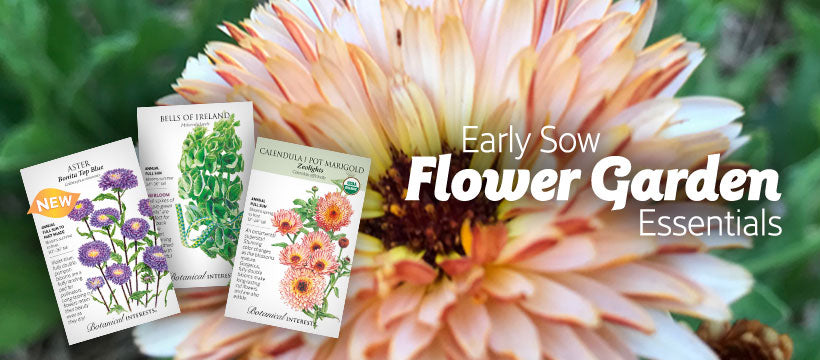
- Variety Info
- Sowing Info
- Growing Info
- Learn More
Variety Info
Days to Maturity: 250-270 days (when planted in fall)
Family: Amaryllidaceae, subfamily Alleoideae (formerly Alliaceae) Allium or Onion family, includes onions, garlic, chives, shallots, and leeks.
Type: Creole garlic
Native: Central Asia
Hardiness: Usually grown as an annual to harvest the bulbs, but can be grown as a perennial
Exposure: Full sun to part shade
Variety Info: While its outer wrapper is snow-white, the individual cloves have a brilliant, pinkish-red wrapper that stands out (and sometimes glows through the papery exterior). Its distinctive shallot-like flavor shines through, whether fresh or cooked. Stores 10-12 months—an excellent storage variety!
Sowing Info
When to Sow Outside: Garlic is planted in fall for harvest 7 to 9 months later (midsummer). In areas with cold winters, sow individual cloves from mid-September to mid-November. Garlic is frost-hardy but ideally should be planted 4 to 6 weeks before the first hard freeze to give the bulbs time to establish roots. In areas with mild winters, garlic can be planted until January.
When to Start Inside: Not recommended if you want to grow bulbs. If you don't get your garlic in the ground, the cloves can be planted indoors any time of year for the green tops that make tasty garlic-flavored raw greens or stir-fry ingredients.
Seed Depth: Plant garlic 2"–3" deep with the pointed side up.
Seed Spacing: One clove every 6"–8"
Row Spacing: 12"–18"
Thinning: Thinning is not necessary if spaced properly during planting.
Growing Info
Harvesting: Garlic bulbs are ready to harvest when the tops are approximately 40% yellow or brown or when the tops start to fall over. This is typically in June and July. Do not leave bulbs in the ground too long, or the skins will decay, reducing storage life. To harvest, lift the bulbs gently with a digging fork (flat tines) or a shovel, digging widely to avoid cutting into them. Gently brush off any loose soil and remove any damaged cloves, but leave the roots and shoots attached. Lay or hang the whole plant in a warm, airy location out of direct sun and protected from rain before curing. For more information, see Garlic: Harvesting, Curing, and Storage.
Special Care: After planting, apply 2"–4" of mulch (e.g., straw, untreated grass clippings, shredded leaves) to maintain moisture, insulate the cloves through the winter, and help prevent frost from pushing cloves to the surface. Loosen mulch in spring to allow shoots to push through thick or compacted mulch. In very cold climates, remove mulch after the last hard freeze to allow soil to warm more quickly. Reapply mulch after shoots emerge to maintain consistent moisture and reduce weeds. Remove weeds regularly to reduce competition for water and nutrients. In spring, hardneck garlic will produce a tall stem with a curlicue at the top and a swollen flower bud at the end. In most cases, this flower stalk, called a scape, should be removed to keep the plant's energy focused on bulb growth and to keep bulbs tight. Scapes can be eaten and have a mild garlic flavor.


